Author: tunez (evm/acc)
Compiled by: TechFlow
The cryptocurrency story this year revolves around three core themes:
Market is rapidly becoming efficient
Stablecoins are rapidly globalizing
Trump is playing 4D chess (or checkers)
Let's analyze these themes one by one.
1. Market is Rapidly Becoming Efficient
1a - Bitcoin and "Web3" are Different Things
Historically, Bitcoin and other crypto markets were interconnected through capital flows. After Bitcoin rose, gains would flow to Ethereum, and then to other parts of the market. Today, Bitcoin has genuine institutional capital inflows. These institutions primarily buy it for Bitcoin's unique attributes (sovereignty, permissionlessness, limited supply), compared to more controlled world currencies. The driving force of this Bitcoin bull market is not focused on other market segments.
Many would think these capital flows would also move to Ethereum due to similar attributes. However, this has not been the case so far. While Ethereum is decentralized, its primary differentiating feature is smart contracts. This makes Ethereum's intrinsic value manifest in its usage, not just technical attributes. Institutions will buy Ethereum, but not because it's decentralized like Bitcoin. They buy Ethereum (and Solana) because it's being used, just like they would buy growth stocks.
1b - Ethereum's Brand is Weakening
Ethereum's disappointing price performance has dampened the morale of the entire cryptocurrency sector, regardless of one's level of support for Ethereum. This also led to a general price decline (again, the impact of capital flows).
You can point out many reasons for its poor performance, but most importantly, it's actually Solana's rise. Before Solana's success, people were more likely to imagine Ethereum's future development rather than its current state.
Standards have been significantly raised, and the market is tired of waiting. Solana's overtaking is a very realistic possibility worth considering for everyone.
1c - Market Participants' Average IQ Reaches Historic High
As prices continue to drop and the market becomes more challenging, more participants have lost everything and left. Those who remain have compelling reasons to stay.
On-chain data is now widely available. You can easily check TPS (transactions per second), transaction fees, and application revenue for each chain. Many market participants do this frequently.
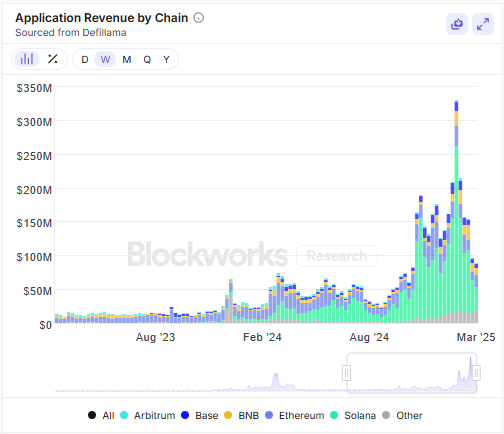
Source: Blockworks
Moreover, market participants actually dive deep on-chain. The current standard is that you either create a new experience or provide a better experience, otherwise you'll be labeled a scam or a waste of resources. No amount of storytelling can change this.
When you combine these dynamics (Bitcoin's de-correlation, Ethereum's weakness, and overall market intelligence), you'll find the market no longer tolerates empty talk. This might be very confusing for those without genuine belief in the underlying technology being built. As prices drop, it becomes easier to claim the entire industry is a scam and that everyone is secretly involved (especially those "evil" venture capital firms).
Stablecoins are Rapidly Globalizing
Some quick data:
Stablecoin usage reached a historic high in 2025
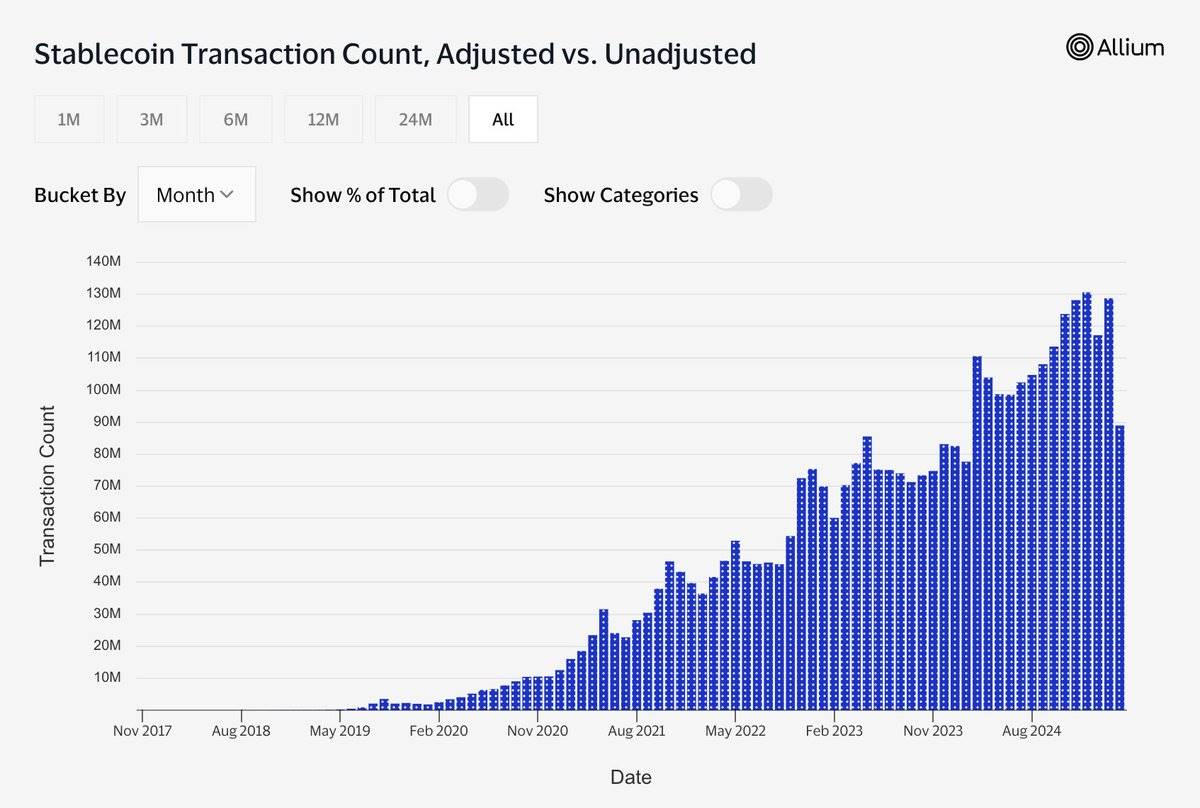
Source: https://visaonchainanalytics.com/transactions
In the past 6 months, stablecoins' daily average transaction volume reached $20 billion.
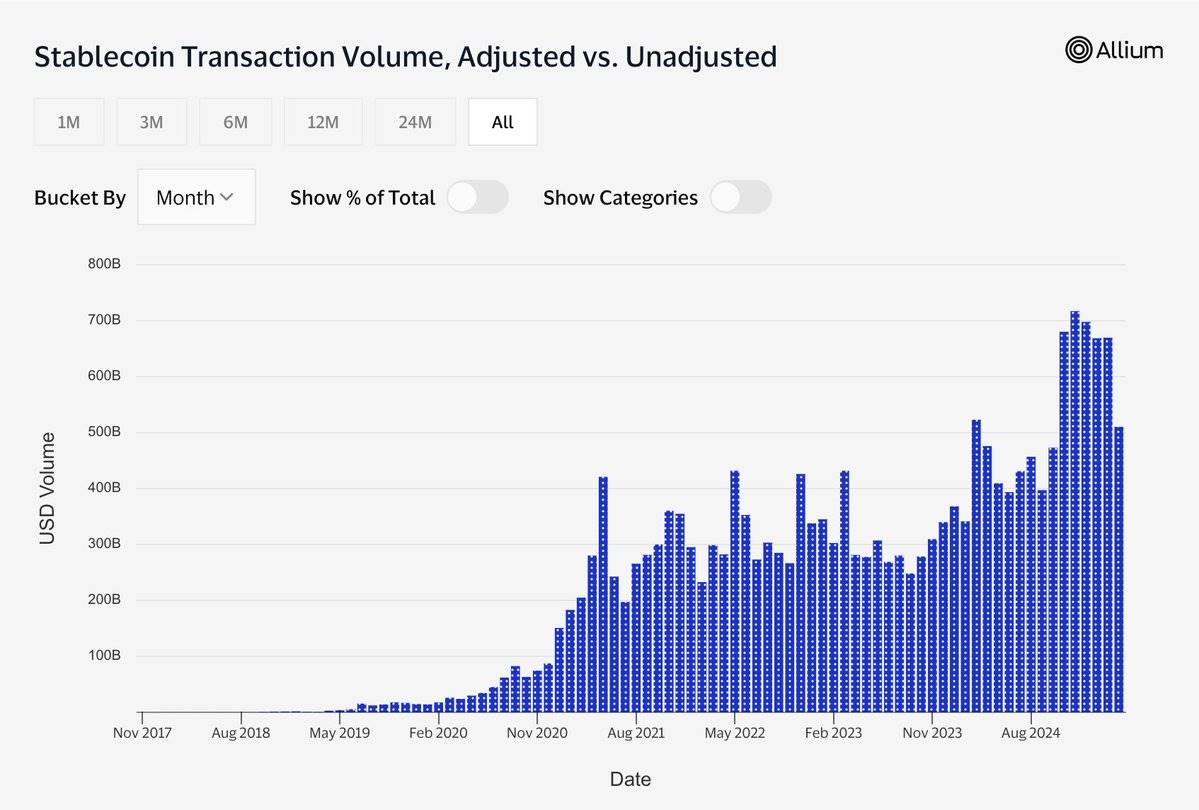
Source: https://visaonchainanalytics.com/transactions
Stablecoins' total supply increased by $100 billion since the beginning of 2024.
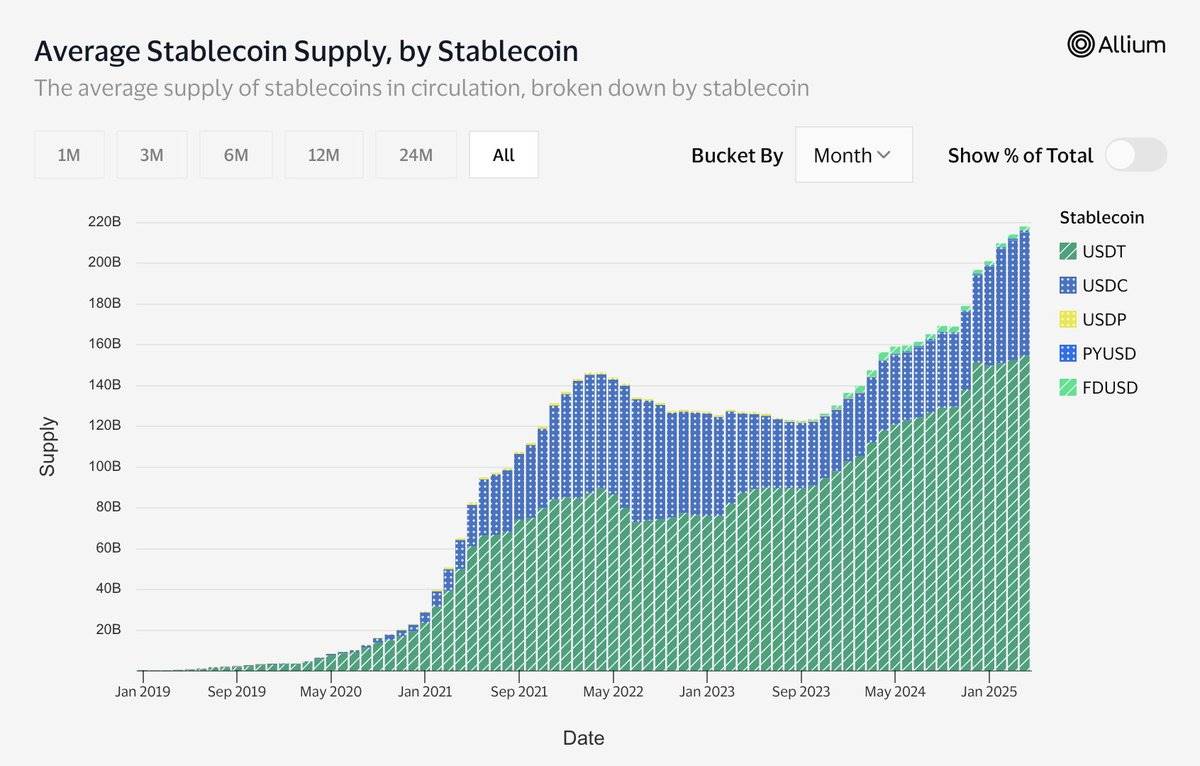
Source: https://visaonchainanalytics.com/supply
I won't define stablecoins as cryptocurrency's "killer app", but rather as the first sustainable on-chain bootstrapping mechanism.
Traditional cryptocurrency bootstrapping mechanisms were through speculation. After price increases, people chased these gains. Arguments about the sustainability of this approach can vary, but it largely drove the industry's growth to trillions of dollars.
There's a difference (and trade-off) between entering cryptocurrency through speculation versus through stablecoins.
Speculation usually guides people to explore the industry. Through speculation, you chase Altcoins on centralized exchanges, and then two years later, somehow buy a Non-Fungible Token on a not-yet-launched chain's testnet. You have this experience because you continuously chase gains in stranger places.
With stablecoins, you directly use them on-chain to transfer value. The drawback here is that there's little reason to explore further gains because you've never chased them. This is why despite the recent rapid adoption of stablecoins, it hasn't translated into general crypto market speculation.
Don't misunderstand, stablecoin adoption represents a sustainably growing on-chain economy. At some point, the world of stablecoins and the world of speculation will meet. But rather than the stablecoin group (ordinary people) lowering standards to accommodate the speculation group, we need to raise standards and provide them with attractive, reasonable use cases, not just attracting gamblers. This is especially good because, as theme one describes, the market is becoming more efficient.
Trump is Playing "4D Chess" (or Checkers)
The Trump administration is good news for cryptocurrency because it means potentially (hopefully) reasonable regulations will be established. This will attract capital, builders, and users to the field.
At the same time, the Trump administration is bad news for cryptocurrency because his economic policies are both extreme and unpredictable. This brings uncertainty, reduces risk appetite, and damages everyone's coins. Is Trump really playing "4D chess"? Nobody knows.
The best way to understand Trump and the market is to imagine him hosting a "Red Light, Green Light" game from "Squid Game".
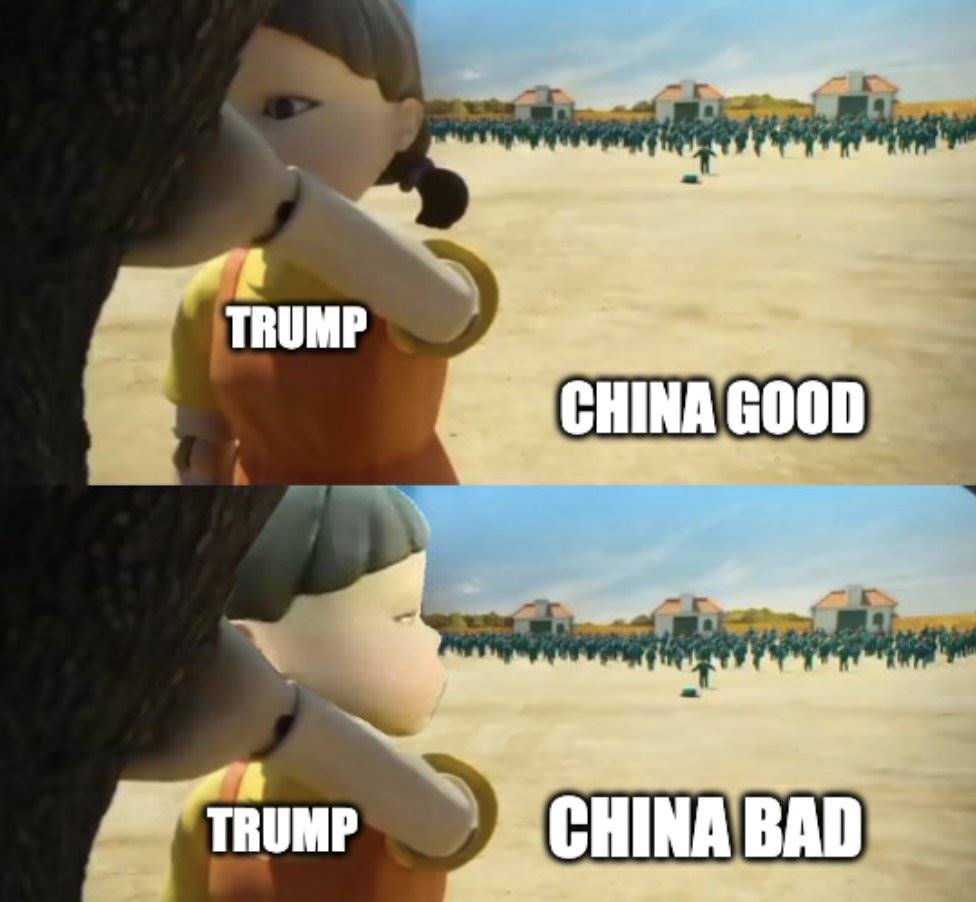
This dynamic will play out this week. Trump announces he won't take a hard stance on China, and Bitcoin rises 10%. While comforting, the next headline is unpredictable.
Summary
New Bitcoin buyers are reluctant to purchase Ethereum or Altcoins, Ethereum's uncertainty has reached a historic high, and market participants are becoming increasingly intelligent. These factors are driving the market to become more efficient, affecting prices almost everywhere in the short term.
Stablecoin adoption and bootstrapping will only increase. The on-chain economy is growing, the industry has intrinsic value, and these people have high standards for use cases.
Cryptocurrency will uniquely benefit from this administration, but risk assets will be impacted before Trump relaxes.
In conclusion, the common theme behind these three macro crypto trends is short-term pain and long-term gains. It's easy to feel like things are dying, but I believe it's actually the opposite. 2025 is the healing year cryptocurrency needs, and only then will we be truly prepared to take the main stage.







